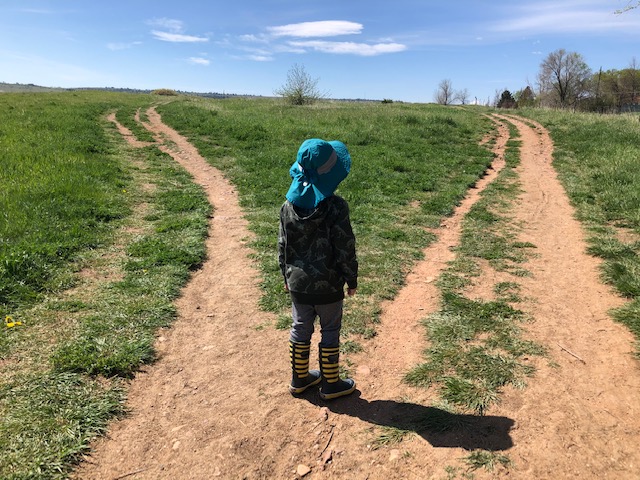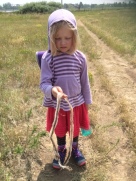Children are out of school for the remainder of the 2019-2020 school year, due to the health threats posed by the Covid-19 virus, sweeping the world. I’m here to prove to you that it’s okay! Your children won’t forget anything crucial that they’ve already learned, and the world already provides them with the materials they need to keep learning.
Why do I know this? Due to a medical issue, I didn’t attend school in 4th grade. My mom and dad didn’t make me do any school work, except read, work on puzzles, create art, garden, and play. I read every day, for at least 4 hours, and spent the other 4 doing the rest. Then, in 5th grade, I was one of 15 kids who attended an “Open Classroom”. Our teacher, Mr. Dube (Doo-Bee), didn’t create any curriculum or lead any lessons. He provided us with traditional classroom materials and non-traditional materials, like wood, hammers, nails, two-burner hot plate, pots and pans, Cuisenaire Rods, screws and screwdrivers, and any other materials we needed to complete a project we wanted to do. I learned a lot that year, left to my own devices and interests. I became a self-directed learner that year, and it has stuck with me through my bachelors and masters studies in Education.
I’ve enjoyed observing families out and about, walking the dirt streets, playing with their pets in the parks, and biking and walking on the path along the river. Many town governments have closed the playgrounds, but that doesn’t mean children can’t play outdoors. All over the world, there are outdoor enthusiasts, and taking this time to enjoy your natural environment with your children is optimal. Even if you don’t enjoy the outdoors, your child will benefit from it.
Enjoy this special time you have with your children. The less you force them to engage in activities as adults do, the more fun they and you will have, indoors and outdoors.
Wear the recommended protective wear, and get out there and have some fun!
I am offering ONE tip for those adults who want to spend time outdoors with children:
Children who can walk should be the leaders on their outdoor experience.
Before you go for a walk with a child, know the behaviors and mindsets of children. They aren’t the same as adults. If you need to go out for a walk to get exercise, leave your children at home with your partner. If you’re single, find a trusting adult who has a clean bill of health to watch them while you do what you need to do for yourself.
Photo Gallery of my time spent with children outdoors.
-

-
Follow children
-

-
Building relationships
-

-
Discovering the unknown
-

-
Compassion for all creatures
-

-
Gentle touch
-

-
Connecting with others
-

-
Recognizing hazards and managing risk
-

-
Physical challenges
-

-
Secret paths
-

-
Imaginary play
-

-
Wildlife discoveries
-

-
Seeing the small things
-

-
Eat when hungry, anywhere
-

-
Curiosity
-

-
Future endeavors
-

-
Reaching new heights for themselves
-

-
Learning about wild edibles
-

-
Developing physical skill of balance
-

-
Using spaces for own desires
-

-
Quiet time alone
-

-
Playing in puddles
-

-
No such thing as bad weather
-

-
Capable beyond belief
-

-
Close observations
-

-
Nature art
-

-
Puddle jumping in the rain
-

-
Adults as role models
To understand why and how you should engage with your children outdoors, here are some facts about children. As you read through them, see if you can match the photos from my gallery, to the facts below.
STAY OFF OF YOUR PHONE WHEN YOU’RE OUTDOORS WITH CHILDREN. But do document your experience with children using videos and photographs. Take candid photos, rather than interrupting the natural flow of their outdoor play.
a. Children walk slowly, looking at the ground and taking their time to observe.
Resist saying, “Hurry up”, “Come on”, “You’ve spent enough time doing that”. You’ll thwart their enjoyment by making the experience about you, not about them. This is where conflicts arise between you and your child, when they are rushed and unable to pursue their own interests.
b. Children are more capable than you may imagine.
Resist doing things for them that they have already mastered for themselves. This takes patience on your part, to let them struggle in order to succeed without you! A sage reminder: if I child is in the process of learning self-care skills, they will need your assistance, encouragement and praise. While they are learning to master a new skill (putting on all of their winter clothing, for example) they will need the support of adults, and even their peers who have mastered the same skill.
It is never okay to deny the support they are asking you for, as you will then create a lack of trust they have for you, stifle the important practice of asking for help, possibly thwart their need to practice persistence, and ultimately thwart their ability to succeed in order to continue learning new skills.
c. Children want you to get excited about what they’re excited about, and to notice what they notice.
Resist bringing your cell phone with you to talk with someone. Use it to take photos/videos of your child while they are discovering the small wonders.
d. Children love to explore the unknown.
Resist going on excursions that are familiar, or that are manicured and inert. Go with your child to discover new, wild, overgrown patches of grass, ditches, stream and riverbeds. Climb over walls, follow unknown paths, peak under bushes, and turn over rocks!
e. Children live in a world of fantasy and make-believe.
Resist using instructional language around any child. Practice tapping into your own imagination by creating fantasy creatures and worlds. Play along with them as they talk to imaginary friends. You want to teach your child, but they want to learn on their own terms too! You don’t have to be an expert in plant and animal identification. Let them be the experts, by letting them name the animals and plants they find.
f. Children need to learn how to manage risk.
Resist EVER saying, “Be careful!”. It means nothing, and only sets a child on edge, wondering what they need to watch out for. With patience and direct verbal and sometimes physical support, allow children to run, jump, climb, throw rocks, sword fight with sticks, tumble, and rumble! Use specific language to help them learn to climb – “Use your hands to reach and grab, and your feet to support your body”. If a child can’t reach high enough to climb onto something, they’re not ready to get up onto it yet.
g. Children need to learn how to identify and avoid hazards.
Again, resist saying “Be careful”. Use direct language. I ask this question when I want them to consider the danger in what they’re doing, “Could you get squished and die if you ….?” Let them think about their answer. Be patient. If their answer is yes, you’ve done your job, and you’ve taught them a valuable life skill they will be able to use forever.
Here’s an example:
“If we keep our knees above the water line, do you think we’ll fall down and get swept down river and under the water? Let’s try it.”
Clear and simple. Remember the teacher in the Peanuts cartoons? Too much talk and all they hear is “Blah, blah, blah…”
h. MODEL the behavior you want to see in your children.
Resist telling them how you want them to be. Resist being the parent who fits this saying, “Do as I say, not as I do”. And, especially when exploring the outdoors, resist giving false testimony about what will happen if they do something you don’t necessarily considrer “safe”. The last thing I want is to put a tragic idea into a child’s head. Show them how to observe, be amazed, have fun, be physically active, by first being that yourselves. Be silly, get muddy!
i. Children don’t mind inclement weather.
Resist avoiding the outdoors because you think, “The weather’s not good”. Weather is warm, cloudy, rainy, snowy, windy, etc. Those aren’t bad words, they’re reality. There’s no such thing as bad weather, just a poor attitude and bad choice of clothing. Children’s bodies are built for moving, and when they’re outdoors they maintain a warm body temperature due to their high metabolism. Adults, on the other hand, generally have slower metabolisms, which often causes us to get colder, faster. Prepare yourselves, and get outside in all types of weather, remember to dress appropriately. This means covering up when it’s cold, and when it’s hot and sunny! Where hats and gloves/mittens. The hands and feet get cold first, and wearing a hat, and plenty of clothing around the torso, will help you stay warm while you watch your child play.
j. Children love to create using nature.
Resist the idea that you need to spend money for children to be creative. The natural world offers an enormous amount of “loose parts”, which can be used for building forts, making faerie homes, nature bracelets, decorating bikes, and so on. Sometimes, just a role of tape, a bag of sidewalk chalk, or some string is all you need.
______________________________________________________________

I found my niche as an outdoor educator as a teenage camp counselor, in the mid-70’s. From 1984 until 2011, I have taught in a variety of educational and recreational settings. I incorporated my knowledge and experience in outdoor education to each venue. In the mid 2010’s I left public education behind, to explore nature-based early childhood education. I received my Masters in Education from Antioch University New England, in Educating for Sustainability. I’ve landed just where I belong, doing what I love, traveling slowly, practicing patience, discovering the small wonders of the world, (most notably small people), and following rather than leading children on outdoor adventures.
39.550051
-105.782067













 Much can be discovered by wandering through back yards, streets, woods, and streams of the places where we live.
Much can be discovered by wandering through back yards, streets, woods, and streams of the places where we live. 

















































You must be logged in to post a comment.